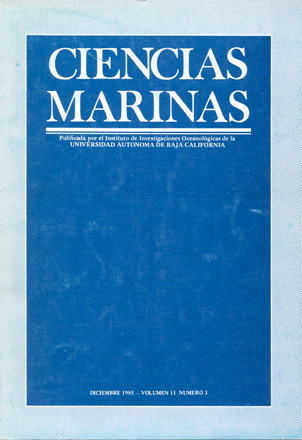Oyster culture in San Quintin Bay, B.C., Mexico: Genetic aspects
Main Article Content
Abstract
In order to assess the genetic resource of San Quintín Bay oyster culture, an electrophoretic analysis on seven genetic loci from 50 organism sample of Crassostrea gigas was performed. The values of genetic variability obtained were compared with those found previously by other authors in three Japanese populations. Besides, genetic similarities and distance were estimated between the San Quintín population and Japanese population, obtaining evidence on the probable origin of the San Quintin population in the Japanese population of Miyagi. Maintenance of genetic variability was evident in the Mexican population, however, heterozygosity deficiency was detected in four out of seven loci assayed. The most probable causes of this outcome are: natural selection against heterozygote genotypes in the new environment experienced by the species; inbreeding produced by means of the mating system employed and/or Wahlund effect provoked by the indiscriminate introduction of spat from different Ameritan Coast hatcheries.
Downloads
Article Details
This is an open access article distributed under a Creative Commons Attribution 4.0 License, which allows you to share and adapt the work, as long as you give appropriate credit to the original author(s) and the source, provide a link to the Creative Commons license, and indicate if changes were made. Figures, tables and other elements in the article are included in the article’s CC BY 4.0 license, unless otherwise indicated. The journal title is protected by copyrights and not subject to this license. Full license deed can be viewed here.

